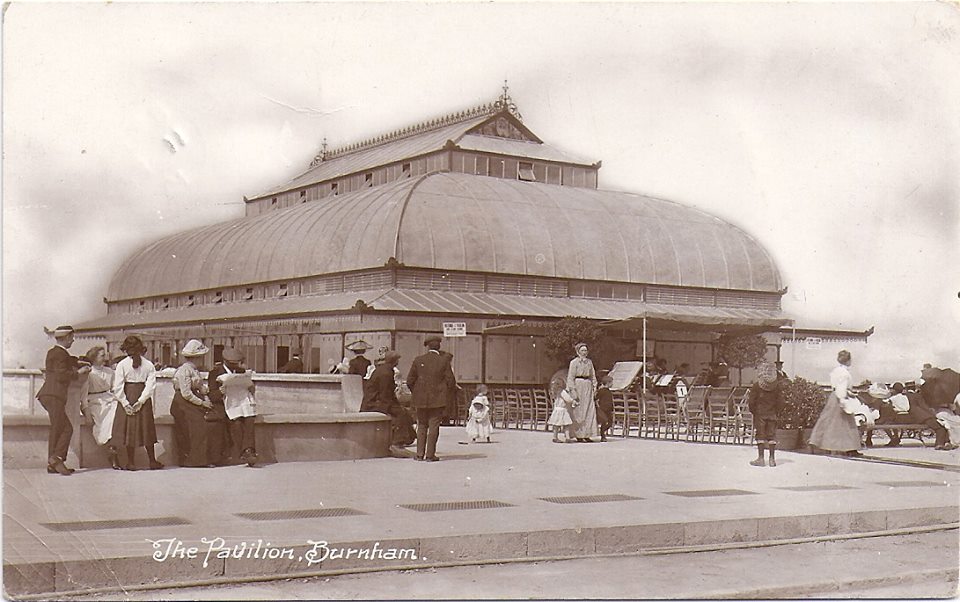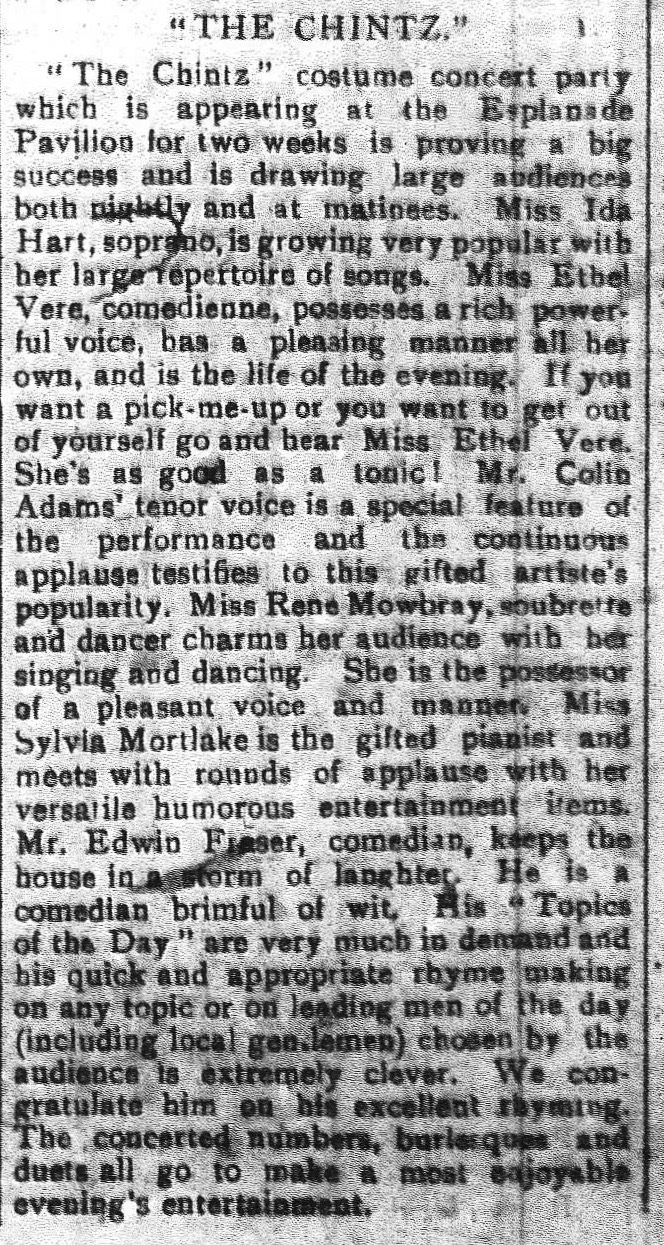
Examination of microfilm records for 1911 shows that the Pavilion was both started and completed and in use in 1911:

Many locals thought that the huge tides in Bridgwater Bay would soon sweep it into the sea – but they were to be proven wrong. The concrete is extremely strong and is largely made up from granite chippings shipped from Penryn in Cornwall. This same material is used in maintenance work to this day.

According to the British Heritage Trust, the design of Burnham-On-Sea pier has associations with the famous Bristol engineer Isambard Kingdom Brunel (1806-1859), showing some similarity with the railway stations at Bristol Temple Meads and Bath Spa.

Whether there was any other intended purpose of the pavilion and why no promenade deck and landing stage ever came to fruition, still remains unknown. Most of the shipping in the area and the pleasure boats used the piers along the coast at Weston-super-Mare or Birnbeck. Some believe it was simply an experiment and was never really designed for any commercial purpose.
The following report appeared in the Burnham Gazette for 10th Aug 1918:

Tinted postcard showing Pavilion band sometime before 1919:
A Burnham on Sea Guide for the 1940’s includes, under ‘Entertainments’ information that “During the season a Resident Concert Party gives performances nightly at the Esplanade Pavilion. Dancers are catered for by a Resident Dance Orchestra.”
A picture from the Guide of 1950 shows the area in front of the Pavilion being used as a ‘children’s corner’

The Guide of 1957 tells us “The Pavilion on the Esplanade in is now used as an indoor ‘Children’s Corner’ with tricycles, roundabouts, motor cars etc. There are also mechanically operated toys. The building is also operated as a public shelter. Around the Pavilion there is usually a mechanically-operated attraction, but this year it will have to depend on the petrol situation” (Rationing due to Suez Crisis).
One of the mechanically-operated attractions:

There are also recollections of a swan and possibly a lion.

Above, Priscilla the swan appears to have wandered away from the Pavilion, was she normally to be found on the beach?
Below is another attraction which offered rides along the Esplanade.

The 1959 guide adds that “Teas and light refreshments re available, also children’s toys. Recorded music is played as a background and during the season special nights are arranged, Old Tyme Dancing, Rock n’ Roll Sessions, Band Concerts etc. There is no charge for admission during the day, but a small charge is sometimes made for evening entertainments.”
By the 1970’s it was being advertised as an amusement arcade with prize bingo and such up-to-date attractions as “twin flavoured ice-cream”




Advert above from Burnham guide 1980, postcard photo from around the same time.
See also https://piers.org.uk/piers/burnham-on-sea-pier

The Countess Bekoffska (who is mentioned for 26/08/1911) also appears in advertisements in South Wales around this time (e.g. https://newspapers.library.wales/view/3647452 at the Tonypandy Empire). She painted flowers very rapidly, hence “lightning artist”.
Thanks for your comment and info Bill, I have put a reference to your comment in the text above.
Thanks for this. My sister has a painting of hers and wanted to find out something about her. Isn’t the internet amazing? 🙂
Thanks for your comment Colin. It must have been good to attract people from the bright lights of Bridgwater!
In the mid 60s it was also used as a Dance Hall. I can remember going there from Bridgwater.